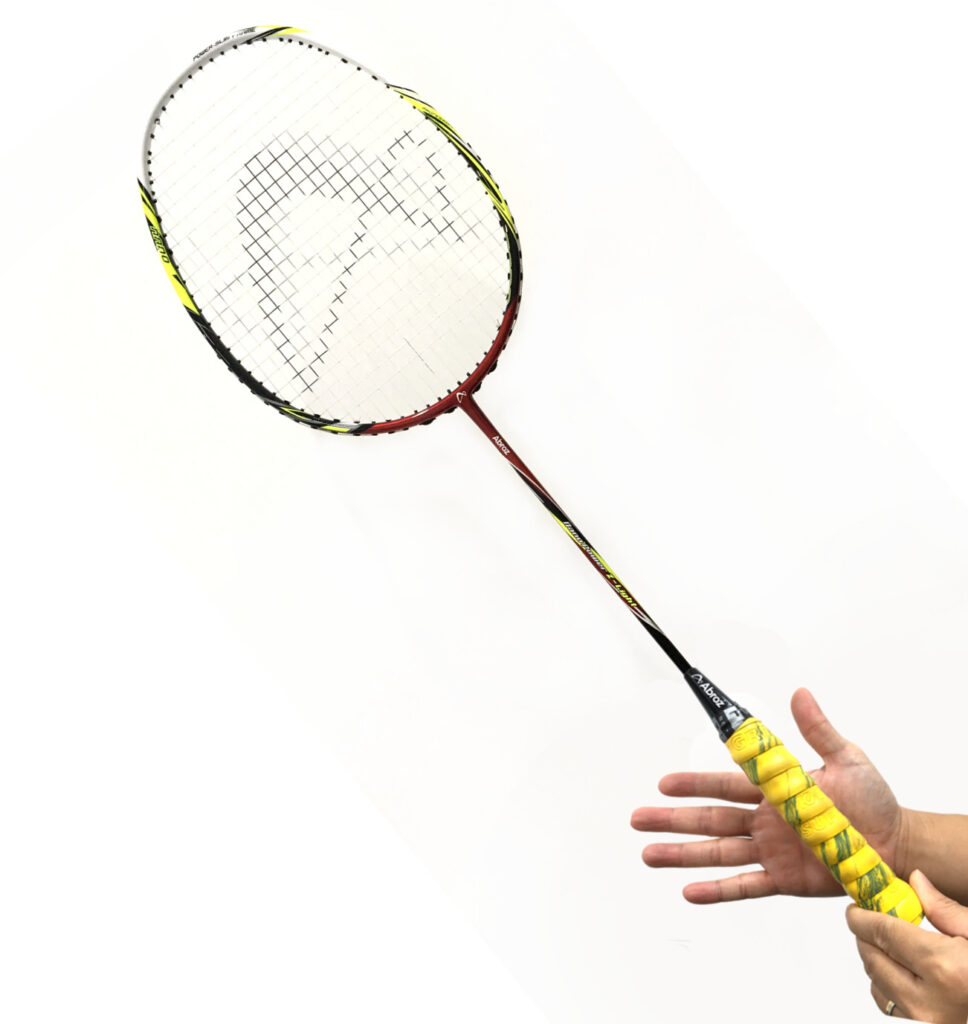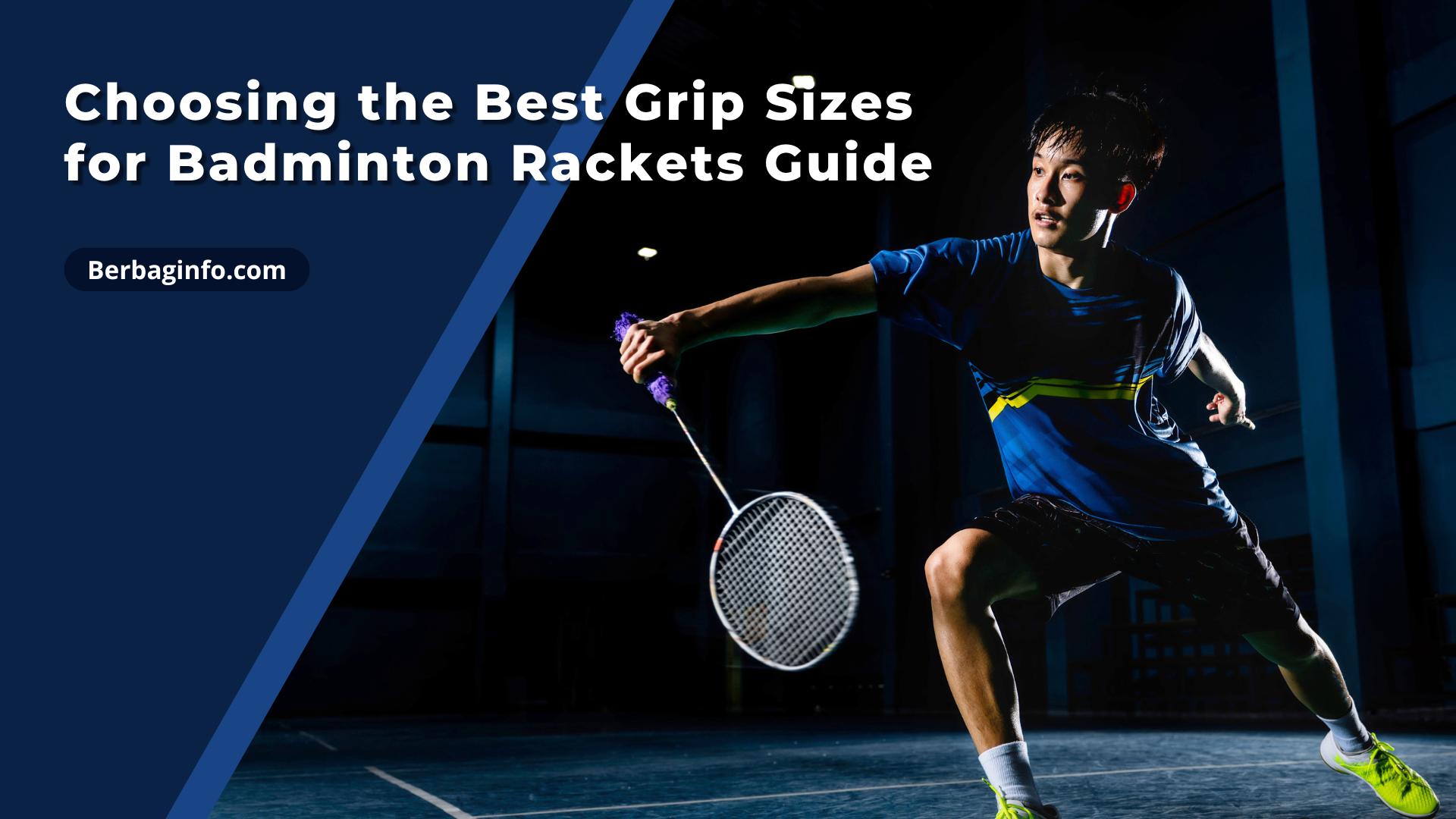Choosing the Best Grip Sizes for Badminton Rackets Guide
Berbaginfo.com – In terms of doing well in badminton, having the right equipment can really help and one area that is often forgotten about but very important is your racket grip size. A good grip not only gives you more power but also control and it can help prevent injuries, so that way you are able to play at your highest capacity. Whether you’re a novice still finding your way or experienced looking to tweak your game, knowing how to select the perfect grip size of this badminton racket is pivotal. This guide will walk you through everything you need to know, starting from the importance of grip size and how to choose the best grip sizes for your badminton rackets.
Why Grip Size Matters

Comfort & Control Are Crucial
Choosing the best grip sizes for badminton rackets has an important role in your comfort sense during playing. A too-small grip or a too-large one may cause discomfort, diminish the control transferring to the body and even personal harm. Here’s why it’s important:
- Precision: A good grip ensures that you control the racket easily and hence get more accuracy on your shots. A grip too loose or tight will mean that your shot making is less consistent and you may lose control when rapid exchanges start.
- Power: An accurate grip size center enables you to transfer power efficiently from your hand, through the racket and into the shuttlecock on contact giving it maximum juice. A grip that is too small can cause you to squeeze harder, and over a long workout this will lead to fatigue. A grip that’s too large may prevent you from flexing your wrist (reducing power).
- Prevent Injuries: Bad grip size can make your hand, wrist and forearm to work harder leading to conditions like tennis elbow, carpal tunnel syndrome or simple fatigue during play. When you have the right grip and size that fits your hands, those muscles tend to put less strain on themselves… when they do not it can lead to repetitive problems causing chronic injury setting you back with undeniable years in a professional life.
Effect of Grip Size on Style Of Play
The size of your grip can have a substantial impact on the way you play. Different grip sizes can affect your game like:
- Smaller Grips: Both assist with control over the wrist, which is necessary when shooting quick off-target shots. A smaller grip gives more flexibility and speed of changing its side in racket. Small Grip – Smaller players who use flicks, deception shots and quick drives may well succeed with a smaller grip to increase maneuverability.
- Greater Grips: A much better fit by using a person with an increase of supply capacity to the swing. And since a bigger grip means better stability in your hold, you can smash and clear with more weight behind it. Players who like to grab the racket more firmly, often when executing smashes or deep clear shots, may find a larger grip beneficial.
Measuring The Right Grip Size for You
Step-by-Step Process for Finding the Right Fit
There are a couple of ways to find your ideal grip size.
- Ruler Method:
- Extend your playing hand flat with completely open fingers
- Measure the distance of your ring finger from its tip to second crease in palm
- This size in millimeters is the perfect grip measurement for your hand. This commonly falls between 75mm and 100mm, corresponding to the typical grip sizes offered at retail.
- Finger Test Method:
- Grip the racket as thought to be hitting.
- Look at where the palm meets your finger tips.
- A finger should be able to comfortably slide in between. If there is too much or not enough space, change the grip size. This method offers a quick and simple way of checking if the grip size fits … no need to hassle around with precise measurements.
Common Grip Size Categories
Badminton rackets usually come with 4 different grip sizes, which are typically referred to as G1 through G5 (though they can be labelled differently by manufacturers). But where I stand most times, this is what each size usually translates to:
- G1: The smallest grip most apt for people with less than average hand size or ones who like to use their wrist a lot. This size is a bit less new and more uncommon, so could be something that would need to get custom made or come from the right brand.
- G2: A slight grippier than G1, offering more stability while still being large enough for wrist control. Intermediate players who are looking for fast moves that hold well need to prefer this one.
- G3: This features a medium grip level with good control along the axis. This is a very commonly used grip size and typically fits most everybody, so it’s probably the safe route to take if you’re unsure.
- G4: For riders with larger hands and who use a lot of their arms for power. The larger size is often the choice for more advanced players who concentrate on smashes and powerful shots of play.
- G5: Best fit for players looking for maximum grip size but who value power over maneuverability It is also great for big handed players or those of you who are uncomfortable with smaller grips.
Customizing Your Grip Size
On the other hand, you might have found a racket with grip size that is quite suitable for your requirements — give or take a little wiggle room to maximize performance. Here are some options:
- Overgrips: Thin layers you wrap over the top of existing grip to make it a little bigger. They are cheap to replace and come in an array of materials for your personal grip comfort. They also offer added sweat absorption, helping to further secure your grip against the challenge of long and grueling matches.
- Replacement Grips: For a greater increase in grip size, the original factory grip can be replaced with another one that is thicker or thinner.
- Choose wisely: Different replacement grips result in altogether different racket feel. Pick one that suits your comfort and playing level requirements.
That will bring us to grip mods where palyers do some modding in their grips which may include buying gripp wraps or even taping up the entire size and shape of heads. That does help with a better fit but takes some trial and error, according to reporters who tried out the feature.
How to Determine the Correct Grip Size
1. Consider Your Hand Size
The simplest factor to consider is your hand size for determining the right grip. Use the methods above to measure your hand and see which range of grip categories fits you best. Don’t forget that your grip is very important to your game, and a too small or large of a grip can hurt you.
2. What Is Your Playing Style
Your style of game — It also depends on how you play. For defensive players who rely on reaction time and reflexes, prefer a smaller guide. Similarly, if you are an attacking player who plays smash with increased power then a wider diameter grip may provide the loss of stability that may prevent damage and injury.
- For Defenders: Pick smaller grips that also facilitate fast wrist movements See Faster Wrist Movements, which help you to get back quickly on the shot and produce tighter control during longer exchanges.
- Offensive: Higher grips are for the leverage and stable base to unleash your deadly smashes or overhead shots fostering aggression, power-centred play.
3. Test Different Grip Sizes
Whenever you have the chance, handle grips in most dimensions that feel ideal to you. Go to a sporting goods store and try different rackets in your hand, which grip will be more ergonomic for you. If you are buying live visit only those retailer which provide flexible return policies to get the purchase back in case Grip Size is not a precise fit once they have been received and experienced.
4. Overgrips help in Changing Grip Sizes
It can also be used to adjust your racket’s grip size if you find it too small or a bit large, by adding overgrips. Adding an overgrip will add a fraction to the grip size and taking it off would do the opposite.
- Overgrips: One easy way to increase the grip dimension, if you feel it is too short. In addition, overgrips supply another level of cushioning which help to make the racket more comfortable and less potent during impact.
- Layer Removal: Some bats include the multiple grip layers. If necessary one can be taken out to make the grip more shallow, but this should be approached with care as there is probably better material underneath.
5. Maintenance and Replacement
Remember, the materials of grip break down eventually, especially if you play often. A loss of cushioning or slipperiness from holding a deteriorating grip leads to losing control over the racket. Check your grip regularly and replace it if needed.getPostUrl;
- Replacement Frequency: Active players will need to change their grips every few months while casual players might only do so once or twice a year.
- Keep Your Grip Clean: By keeping your grip clean will help to prolong the lifespan of it. Remember to wipe the grips down with a damp cloth after each play and let it air dry before storing your racket.
Conclusion
Selecting the best grip sizes for your badminton rackets is an important part of improving performance. However, if you pay attention to how grip size impacts your comfort and control as well as the results from using different measurements, it is definitely possible for you to determine which provides a best overall fit with respect to what type of tennis player/competition style suits yours. So remember, a grip that fits you right means better performance and possibly fewer injuries as well. Choose wisely so you can play with that perfect grip size just for you and benefit as follows.

